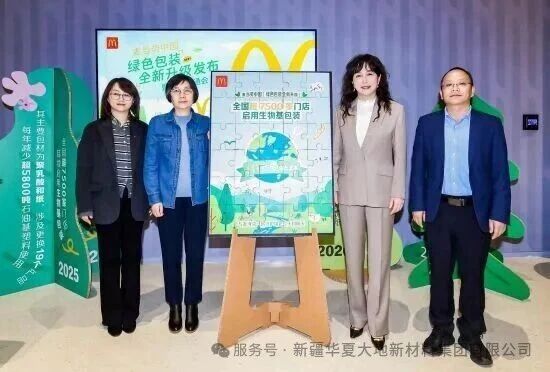The United States and Europe have positioned biomanufacturing as the core battlefield in the "21st-century economic sovereignty contest."
McKinsey predicts that, in principle, 60% of the products in the market can be produced through biological manufacturing methods, which is expected to directly generate approximately 4 trillion US dollars in economic value in the next 10 to 20 years. It is projected that by the end of the 21st century, biological manufacturing is expected to create 30 trillion US dollars in economic value, accounting for one-third of the global manufacturing industry.
Recently, Tan Tianwei, an academician of the Chinese Academy of Engineering and the president of Beijing University of Chemical Technology, pointed out in his article "Creating a New Growth Engine for Bio-Manufacturing and Accelerating the Development of New Quality Productivity" that China's bio-fermentation capacity accounts for over 70% of the global total, and the output of amino acids, organic acids and other products remains the world's largest. However, the success rate of engineering scale-up is still less than 10%, and the industrial scale development faces multiple challenges.
The industrialization tipping point has arrived, and breakthroughs are driven by underlying technologies.
Tan Tianwei believes that biomanufacturing is accelerating the transformation of cutting-edge technologies into productive forces and is currently at the critical point of industrialization. The iterative development of underlying technologies such as gene editing, AI biological design, and high-throughput DNA synthesis provides an economic foundation for the industrial application.
For instance, the cost of gene sequencing has dropped by ten thousand times within a decade, and the cost of DNA synthesis has fallen below 0.006 US dollars per Mb. The genome editing technology based on the CRISPR-Cas system has been widely applied in microorganisms such as Escherichia coli and Saccharomyces cerevisiae. AI technology has also made breakthroughs in the field of protein structure prediction, enabling scientists to design enzymes that do not exist in nature and develop more efficient metabolic pathways.
The advantage of biomanufacturing lies in breaking the deadlock of traditional industries. Take the monomer of biodegradable materials, dicarboxylic acid, as an example. The domestic annual output value is 700 million yuan, but the production process relies on chemical catalysis, which is energy-intensive and highly polluting. In the field of alternative protein in the food industry, China's self-sufficiency rate of soybeans is less than 15%, and it needs to import 100 million tons annually, equivalent to 761 million mu of arable land resources. Through microbial protein synthesis technology, a "non-arable land dependent" supply chain can be constructed to alleviate resource constraints. In addition, biomanufacturing has significant low-carbon characteristics. According to estimates, biobased products can reduce emissions by 50% to 70% on average compared to petrochemical routes. If a 30% substitution rate is achieved in the chemical industry, more than 1.5 billion tons of carbon dioxide can be cumulatively reduced before 2030.
The global competitive landscape has taken shape, with China having both advantages and shortcomings.
In recent years, the United States and Europe have regarded biomanufacturing as the core battlefield of the "21st-century economic sovereignty struggle". The United States has built a full-chain system through the "National Biotechnology and Biomanufacturing Initiative"; the European Union has laid out research through plans such as "Horizon 2020"; Germany has promoted the application of synthetic biology through the "National Bioeconomy Strategy", and enterprises such as BASF and Evonik have achieved industrialization results.
Although China has advantages in the downstream of the industrial chain and application ecosystem - the core industry scale of biomanufacturing exceeds 800 billion yuan, and its fermentation capacity accounts for more than 70% of the global total, it is still constrained by others in core technologies such as upstream gene editing and databases.
Tan Tianwei pointed out that the large-scale development of China's bio-manufacturing faces four major challenges:
Monoculture of raw material system: 90% of the projects rely on raw materials based on corn starch and other grains, with the utilization rate of non-grain raw materials being less than 5%, and the proportion of raw material costs exceeding 60%.
Lack of industrial adaptability: Laboratory strains have poor tolerance and low metabolic flux during large-scale production, and the success rate of engineering scale-up is less than 10%.
High separation and purification costs: The purity of monomers for bio-based materials needs to exceed 99.9%, and traditional processes result in costs accounting for more than 40%.
The economic performance of the product is lacking: there are few high-value-added categories, there is a structural overcapacity in fermentation production, and the market access for new products is slow.
Development suggestions: Build an independent and controllable industrial ecosystem.
Tan Tianwei proposed that China needs to design a "raw materials - catalysts - processes - products" collaborative system from the perspective of the entire industrial chain.
Breakthrough in fundamental technologies: Focus on the research and development of enzyme and cell design tools, build a database and strain library with independent intellectual property rights, and develop specialized equipment such as high-throughput DNA synthesizers.
Reconstruct raw material supply: Develop utilization technologies for non-grain raw materials such as lignocellulose and carbon dioxide to reduce reliance on grain.
Strengthen the pilot-scale platform: Build a universal pilot-scale base, provide full-chain services, and compress the technology conversion cycle to 3-5 years.
Optimize the policy ecosystem: Establish pilot zones for experimentation in regions such as the Beijing-Tianjin-Hebei area and the Yangtze River Delta, improve the standards for new products entering the market and the carbon trading mechanism, and enhance industrial competitiveness.
According to McKinsey's prediction, 60% of global products can be produced through biomanufacturing, which will directly generate about 4 trillion US dollars in economic value in the next 10 to 20 years. Whether China can seize this opportunity depends on the coordinated advancement of technological breakthroughs and industrial ecosystems.







